-
Membership
Membership
Anyone with an interest in the history of the built environment is welcome to join the Society of Architectural Historians -
Conferences
Conferences
SAH Annual International Conferences bring members together for scholarly exchange and networking -
Publications
Publications
Through print and digital publications, SAH documents the history of the built environment and disseminates scholarship -
Programs
Programs
SAH promotes meaningful engagement with the history of the built environment through its programs -
Jobs & Opportunities
Jobs & Opportunities
SAH provides resources, fellowships, and grants to help further your career and professional life -
Support
Support
We invite you to support the educational mission of SAH by making a gift, becoming a member, or volunteering -
About
About
SAH promotes the study, interpretation, and conservation of the built environment worldwide for the benefit of all
SAHARA Highlights: Brutalist Interiors
Aug 3, 2021
by
Jacqueline Spafford and Mark Hinchman, SAHARA Co-Editors
Brutalism is a strand of modernism that has fans and foes. Despite the general perception, it doesn’t indicate an architecture that is purposely brutal or ugly. Its name derives from the French word for concrete, béton brut. The analogous entity in the world of art is art brut, usually translated as inside art or raw art. Its chief acolyte was Jean Dubuffet who coined the term to indicate art that lay outside of artistic conventions. In architecture, buildings that reveled in their materiality soon moved into the architecture mainstream, with a number of prominent commissions. What is consistently true of brutalist building is the honesty of their approach to materiality. A signature move of many brutalist buildings is cast-in-place concrete in which the imprint of wooden forms remains visible. Although most associate brutalism with concrete, there are metal brutalist buildings, by Alison and Peter Smithson, and Gillespie, Kidd and Coia, for example.
SAHARA has significant holdings of brutalist projects, although the existence of so many photographs of interiors comes as a delightful surprise. A number of academic structures were built that are termed brutalist, including libraries, performing arts spaces, and architecture departments. Included in this month’s highlights are two works by Le Corbusier and Louis Kahn. They are not brutalist per se, but because of their deft use of materiality, brutalist architects such as Paul Rudolph held them in high esteem.
Brutalist buildings were often excoriated by the public when new, and little loved once they fell into disrepair. They regularly make the list of the world’s ostensibly ugliest buildings. Even if controversial, they are much loved by architects. There are numerous sites that promote brutalism, such as the lively Socialist Modernism Instagram photography series.
The Brutalist Boston City Hall, 1968, by Kallmann McKinnell and Wood, was controversial from its beginning, and when around its 50th anniversary it required repairs, some called for its demolition. Circle Campus, Chicago, Illinois, 1965, was a masterwork by member and regular attendee of SAH annual conferences, Walter Netsch. It was disfigured in its postmodern remodeling in the late 1990s which worked to hide its brutalist features. Among the performance spaces adhering to Brutalist aesthetics was John Johansen’s Morris A. Mechanic Theater in Baltimore, demolished in 2014. On a brighter note, Denys Lasdun’s National Theatre, 1976, and Chamberlin, Powell and Bon’s Hayward Gallery, 1982, both in London, were renovated in sensitive ways that brought out their best features and gave them a new generation of admirers. Whether your wanderings take you far and wide, or close to home, please add your contributions to the SAHARA collection.
To see more SAHARA content: sahara.artstor.org/#/login
To learn more about contributing, visit: sah.org/sahara
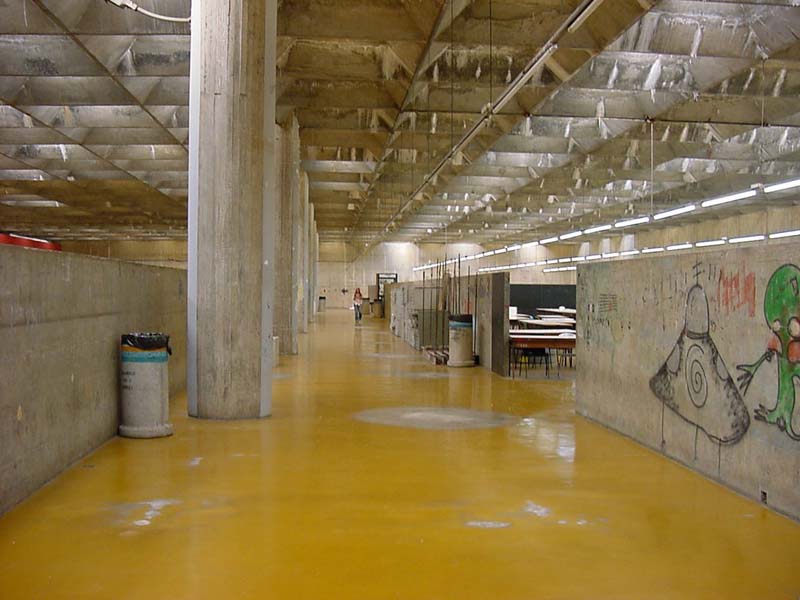
João Batista Vilanova and Carlos Cascaldi. Faculty of Architecture and Urbanism, University of São Paulo, São Paulo, Brazil, 1961. Photograph by Paula Mastrocola, 2006. The photograph captures the studio space before its restoration.
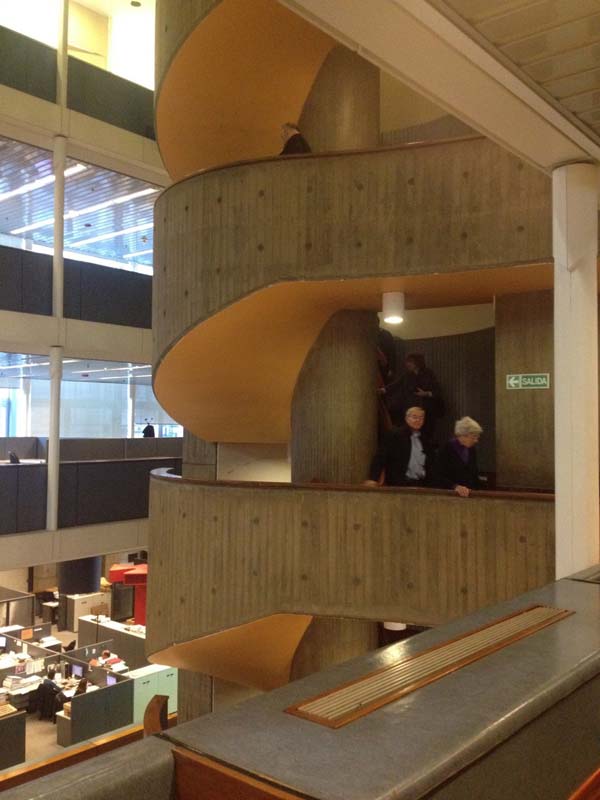
Clorindo Testa and SERPA (Sánchez Elía, Federico Peralta Ramos and Alfredo Agostini). Banco Londres y América del Sur, Buenos Aires, Argentina, 1962–1966. Photograph by Liz Donato, 2015. Office interior. The Banco Londres is one of the major monuments of South American brutalism and is equally significant for its interior that featured open office planning around a central atrium. The contribution of brutalist projects to the history of workplace design is an understudied topic.
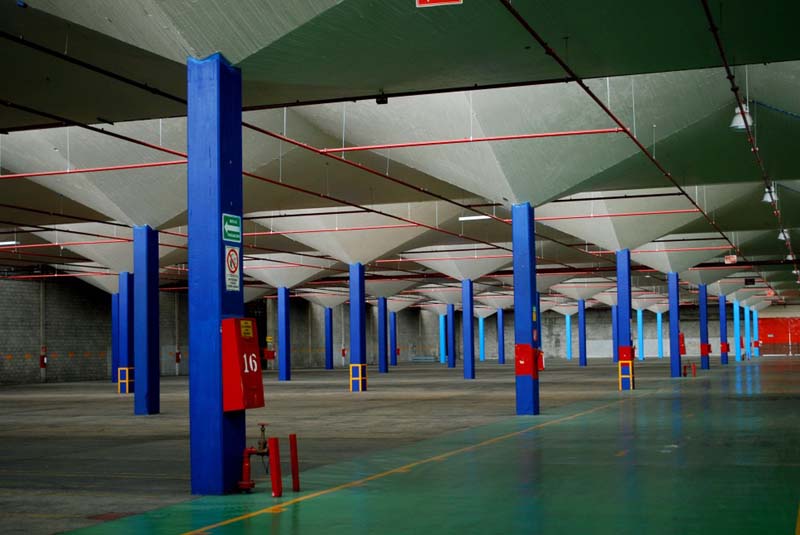
Félix Candela. Bacardi Bottling Plant, Mexico City, Mexico, 1958–1961. Photograph by Amanda Delorey, 2010.
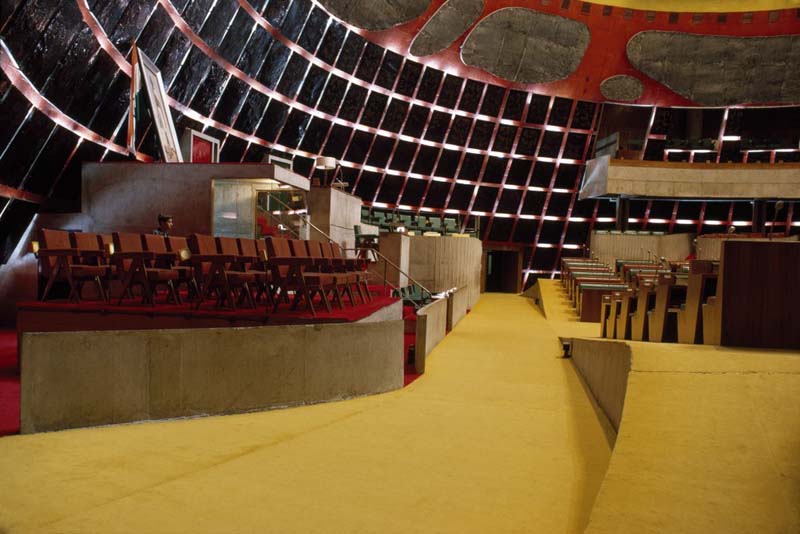
Le Corbusier. Palace of Assembly, Chandigarh, India, 1952–1963. Photograph by George Everard Kidder Smith. Le Corbusier did not describe his work as brutalist, but his late work, such as the Upper House Assembly Chamber, was held in high esteem by those who did.
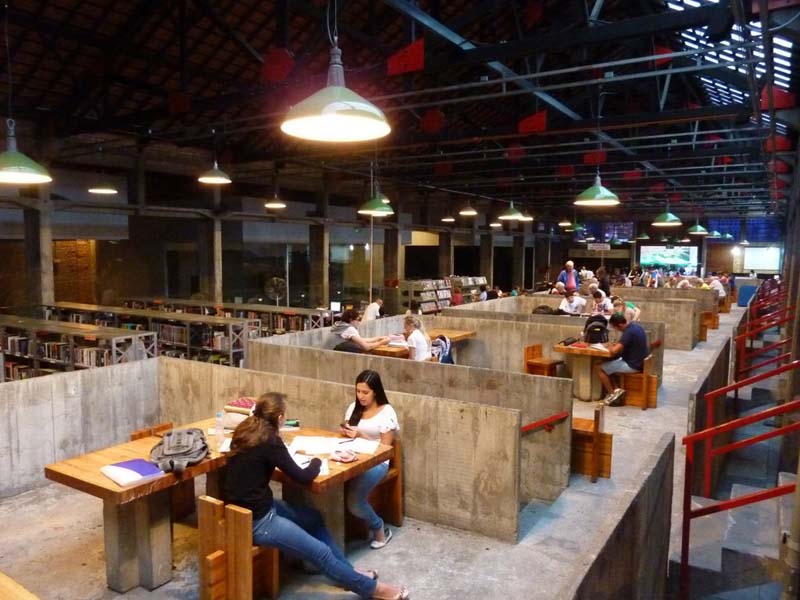
Lina Bo Bardi. Serviço Social do Comércio (SESC) Pompeia Factory, São Paulo, Brazil, 1977–1982. Study area interior. Photograph by Ricardo Agarez, 2013. The adaptive reuse project rose inside a former metal barrel factory and housed a library, gallery, performance space and sports facilities.
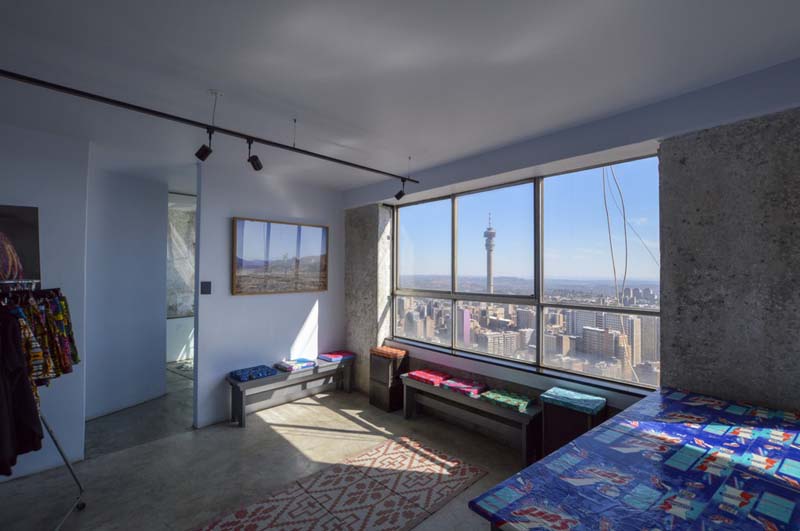
Mannie Feldman, Manfred Hefner, and Rodney Grosskopf. Ponte City apartment, floor 53. Johannesburg, South Africa, 1975. Photograph by Sarah Rovang, 2018. The circular building is the tallest residential building in Africa and has had a storied history, from desirable real estate to decay to rehabilitation.
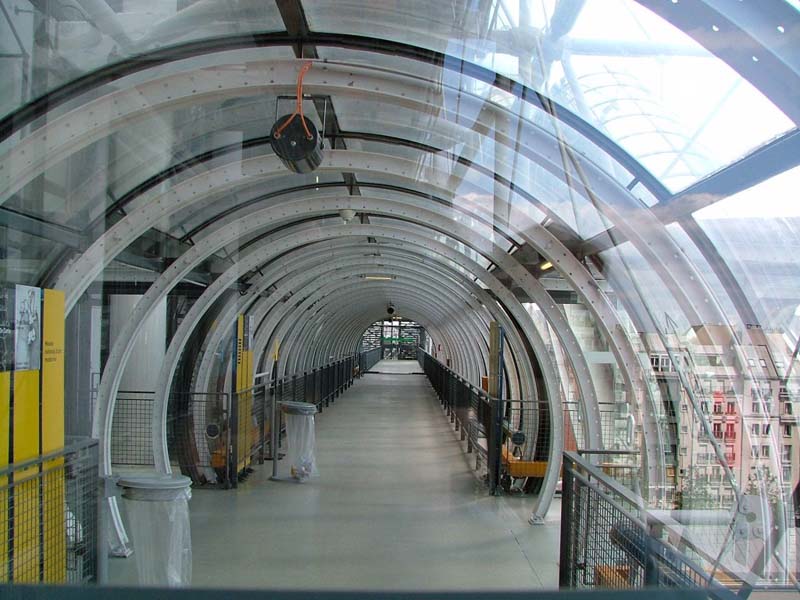
Renzo Piano and Richard Rogers. Centre Georges Pompidou, Paris, France, 1973–1977. Walkway interior. Photograph by Peter Clericuzio, 2004. This polemical structure was one of the most controversial buildings of the 20th century; it is now an accepted part of Paris’ cultural landscape.
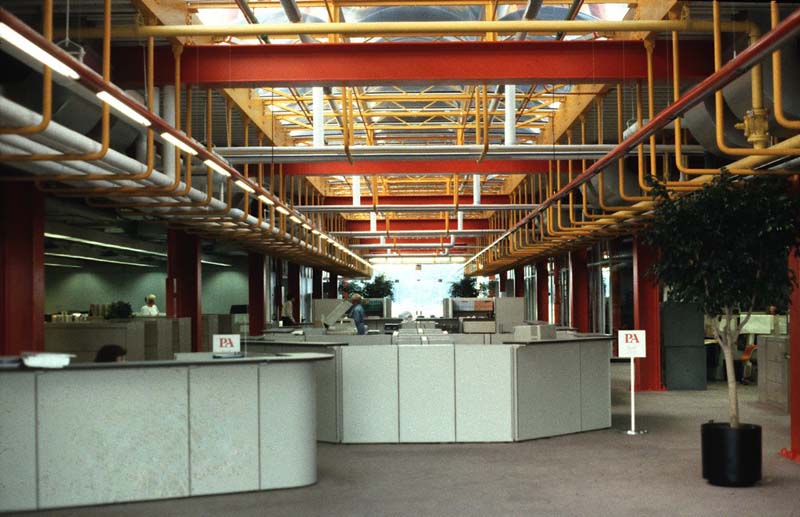
Richard Rogers. PA Technology Center, Highstown, New Jersey, United States, 1985. Photograph by Lauren Soth, 2007. The office design was Rogers’ debut in the United States.
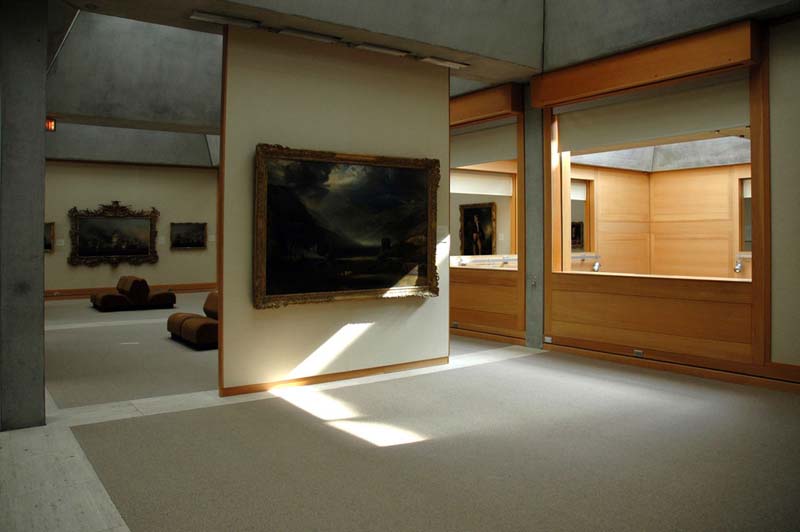
Louis Kahn. Yale Center for British Art, New Haven Connecticut, United States, 1969–1974. Gallery interior. Photograph by Carrie Hunsaker. Kahn, like Le Corbusier, did not wave the banner of brutalism, yet his works were admired by those in the brutalist cannon.
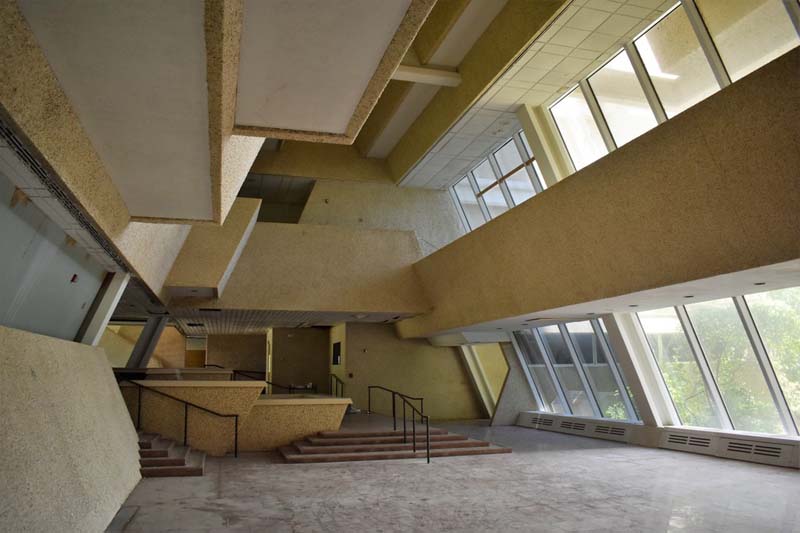
Paul Rudolph. Burroughs Wellcome Headquarters, Durham, North Carolina, United States, 1969–1972. Photograph by Vyta Baselice, 2018. Baselice took the photographs that she uploaded to SAHARA in 2018; they are important documents of the office and laboratory building by one of the preeminent brutalist architects that was demolished in January of this year.


